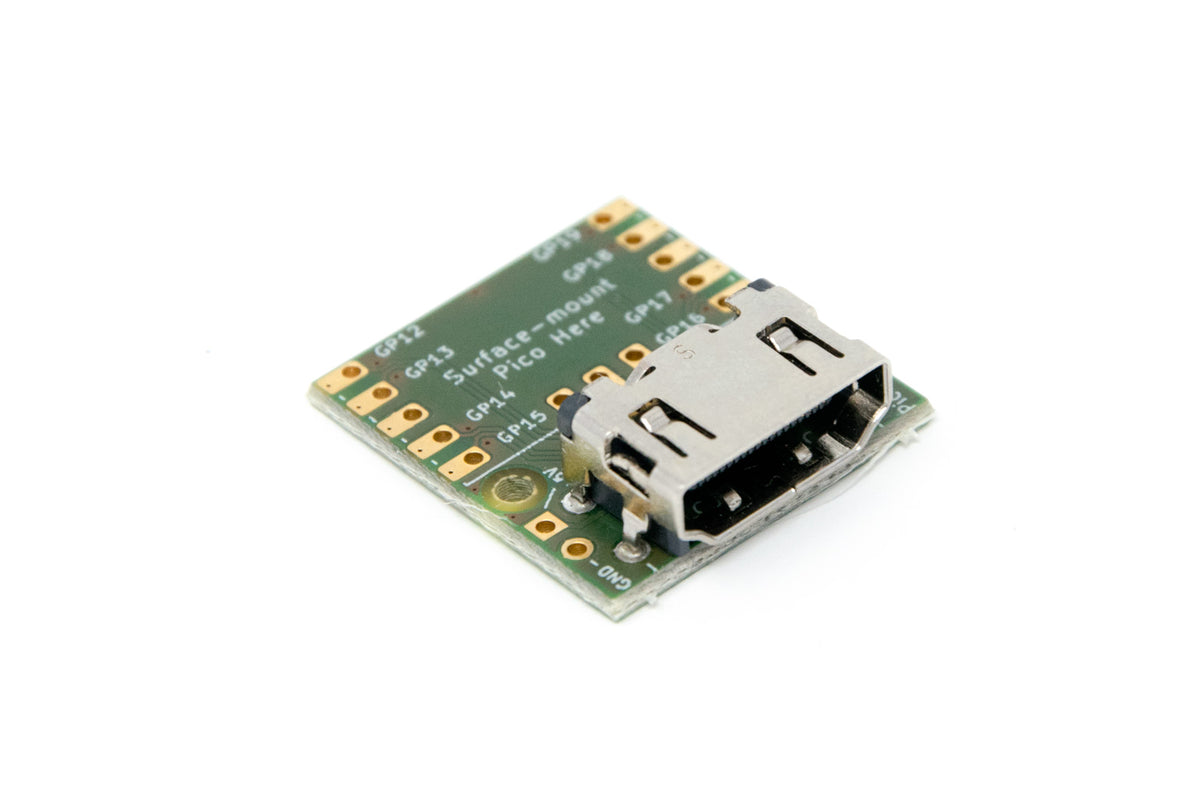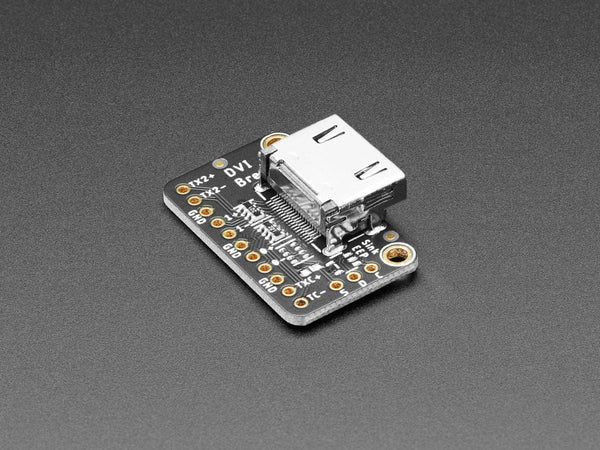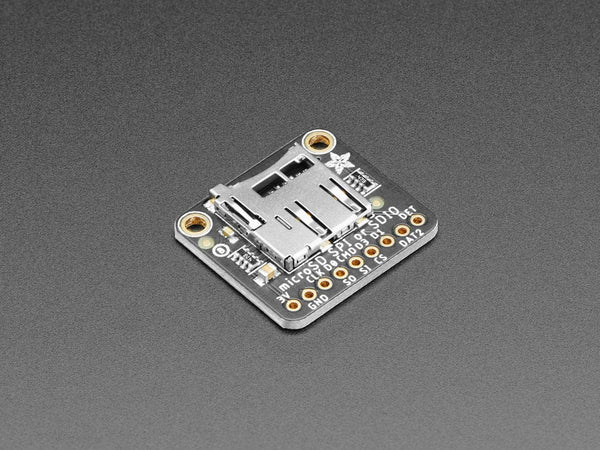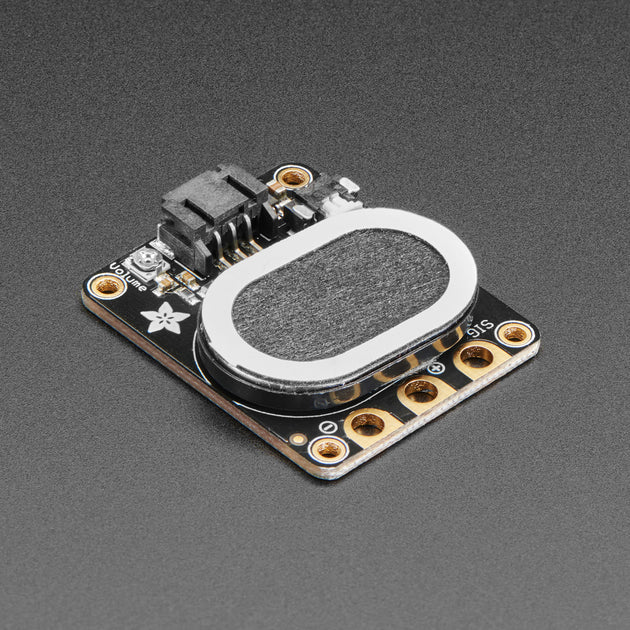48k/128k ZX Spectrum for Raspberry Pico Pi RP2040
- DVI over HDMI (Wren's Amazing PicoDVI)
- LCD support (ST7789 320x240)
- VGA video (RGB332, RGB222, RGBY1111)
- USB keyboard & Joysticks
- PS/2 keyboard
- Martix keyboard
- PWM/I2S DAC audio for 48k buzzer and AY-3-8912
- Audio input (load from tape)
- 12 quick save slots
- Load from .z80 snapshot files
- Read from .tap & .tzx tape files
- On screen menu system
- Kempston and Sinclair joystick emulation
- Breadboard
- PICOZX
- RetroVGA
- PicomputerMax
- PicomputerZX
- Pimoroni Pico DV Demo Base
19/01/23 - Added new target for ArnoldUK. This target can read from a standard 48k Spectrum keyboard matrix.
25/12/22 - Very basic support for sub-folders in the 'snapshots' and 'tapes' storage areas has been added. Files can be renamed, copied and deleted from the menu system. The quick-saves folder is now under the snapshots folder and behaves just like any other folder. The file 'explorer' has the following commands:
- <space>/<enter> - enter a folder/load a file
- ESC - Go up a folder
- 1=DEL - Delete the file
- 2=REN - Rename the file
- 3=CPY - Copy the file
- 4=PST - Paste the file
- 5=REF - Reload the list of files in the current folder
The function keys for playing tapes have been removed. The idea is that in the future more useful controls will be added like 'play', 'stop' and 'eject'.
5/12/22 - The emulator can now cope with more files in the snapshots and tapes folders without running out of memory. I've tested up to 400 but it may survive more that this. Directory entries are now written to a file .dcache which can be updated from the menus by 'rescanning' the folder. If you are adding files to the folders on a PC you can just delete the .dcache and it will get regenerated on next power-on.
I've moved to the Redcode Z80 emulator as:
- It comes with a test suite
- It is much faster than the previous emulator
TZX support added with some omissions:
- No CSW support (raise an issue if this is important to you)
- There are some compatiblity issues
Builds with an RP_AUDIO_IN pin can now load from tape. Preparing the audio signal will require a little extra circuitry and some examples will be added to this page.
The move from Carl's no-OS-FatFS-SD-SPI-RPi-Pico to Pimoroni's FatFS was made as the SD card pins on the Pimoroni Pico DV Demo Base do not match up with the RP2040 SPI harware support. The Pimoroni library has a PIO SPI driver, which gets around the problem.
Pre-built binary targets can be copied directly to a Pico Pi. They can be downloaded from the links in the table below or found in the uf2 folder. Connect your Pico Pi with a USB cable, while holding down the program button:
| Board | Binary |
|---|---|
| HDMI breadboard | ZxSpectrumBreadboardHdmi1PinAudio.uf2 |
| HDMI breadboard | ZxSpectrumBreadboardHdmi2PinAudio.uf2 |
| HDMI breadboard | ZxSpectrumBreadboardHdmi4PinAudio.uf2 |
| VGA breadboard | ZxSpectrum4PinAudioVga1111Ps2.uf2 |
| PICOZX | ZxSpectrumPicomputerVga222Zx.uf2 |
| RetroVGA | ZxSpectrumPicocomputerVga.uf2 |
| PicomputerMax | ZxSpectrumPicocomputerMax.uf2 |
| PicomputerZX | ZxSpectrumPicocomputerZX.uf2 |
| Pimoroni Pico DV | ZxSpectrumPicoDv.uf2 |
| Pimoroni Pico VGA | ZxSpectrumPicoVga.uf2 |
| HDMI + key matrix | ZxSpectrumBreadboardHdmiKbd1PinAudio.ufs |
| ArnoldUK | ZxSpectrumPicomputerVgaAuk.uf2 |
e.g. for the HDMI breadboard wiring show above use:
cp ZxSpectrumBreadboardHdmi4PinAudio.uf2 /media/pi/RPI-RP2/These targets are discussed in more detail in the following sections.
This is a series of targets based around my original breadboard prototype:
The targets are:
- ZxSpectrumBreadboardHdmi4PinAudio
- ZxSpectrumBreadboardHdmi2PinAudio
- ZxSpectrumBreadboardHdmi1PinAudio
They support the following:
- USB keyboard
- PS/2 keyboard
- USB joysticks
- HDMI video
- PWM sound
- Audio input (load from tape)
- SPI SD card
- Serial port debug
All of these targets share the same pinout but make different use of the 4 audio pins:
This is a target similar to the HDMI prototype which uses VGA video output.
It supports the following:
- USB keyboard
- PS/2 keyboard
- USB joysticks
- VGA video (RGBY1111)
- PWM sound (4 pin)
- SPI SD card
- Serial port debug
This target uses 4 audio pins:
This is a target written for Bobricius' PICOZX
It supports:
- USB keyboard
- Keyboard martix
- USB joysticks
- VGA video (RGB222)
- PWM sound (1 pin)
- Audio input (load from tape)
- SPI SD card
Here are the pin assignments:
This is the target for Bobricius' Retro VGA board:
It supports the following:
- USB keyboard
- USB joysticks
- Matrix keyboard (6x6)
- VGA video (RGB332)
- PWM sound (1 pin)
- SPI SD card
Here are the pin assignments:
These are the targets for Bobricius' Retro PICOmputerMAX and PICOmputerZX. The targets are very similar except the LCD on the PICOmputerZX has rounded corners and needs a different menu layout.
It supports the following:
- USB keyboard
- USB joysticks
- Matrix keyboard (6x6)
- LCD video (ST7789)
- PWM sound (1 pin)
- SPI SD card
Here are the pin assignments:
This target matches the Pimoroni Pico DV board:
It supports the following:
- USB keyboard
- USB joysticks
- HDMI video
- I2S sound
- SPI SD card
Here are the pin assignments:
This is a target similar to the HDMI prototype which can read from an original Spectrum keyboard matrix.
It is a work in progress.
It supports the following:
- USB keyboard
- Matrix keyboard (8x8)
- USB joysticks
- HDMI video
- PWM sound (1 pin)
- SPI SD card
Here are the pin assignments:
I don't know how the original keyboard pins were numbered but mine go from left to right with the keyboard oriented as you would type on it.
All keys are fully functional and the Emulator Menus can only be accessed via an external button connected to one of the GPIO pins. The Menu can be navigated using the Spectrum's keyboard number keys. There are an extra 8 external buttons that can been used for setting the Spectrum ROM boot mode and a Joystick Keyboard.
Please see the Schematic diagram for more information on GPIO pins used.
There are two techniques for audio output. The first is a mixture of digital sound and PWM output, which comes in three variants. The second is is using a DAC connected to the Pico using I2S.
PWM audio output comes in 3 variants 1, 2 and 4 pin:
| Label | 1 Pin | 2 Pin | 4 Pin |
|---|---|---|---|
| RP AUDIO1 | Buzzer & AY-3-8912 PWM | AY-3-8912 PWM | AY-3-8912 Channel A PWM |
| RP AUDIO2 | - | Buzzer | Buzzer |
| RP AUDIO3 | - | - | AY-3-8912 Channel B PWM |
| RP AUDIO4 | - | - | AY-3-8912 Channel C PWM |
High frequencies need to be filtered out of the PWM audio output and mixed with the Spectrum's digital audio. Here are some sample designs. Please note they are not carefully designed but made from components I found lying around. If you create a particularly nice sounding design please let me know and I will add it to the documentation.
Separating out the Spectrum buzzer from the AY-3-8912 improves the fidelity of the Spectrum beeps.
The best audio is achieved by having separate pins for the Spectrum buzzer and AY-3-8912 A,B & C channels.
The sound is actually quite good from the 4 pin filter and at some point I will do a stero version.
Designs that only have a single GPIO pin available can have the audio mixed digitally:
The emulation can drive a PCM5100A DAC for line out audio over I2S. It uses the RP_DAC_DATA, RP_DAC_BCLK and RP_DAC_LRCLK pin on the Pico. Currently, only tested on the Pimoroni Pico DV board.
The following circuit shows roughly how to connect an HDMI socket; I have always used a breakout board...


...but this is what I think it boils down to:
So far, there are three supported VGA configurations, which can be found in the various build targets. They have all been designed with a combination of plagiarism and guesswork, so please let me know if you have better versions and I will update this document.
Although this is the most complicated, it is my favourite as it only uses 5 pins on the Pico. The display is slightly paler than the other two versions, which is easier on the eyes.
See this CMakeLists.txt for an example configuration.
See this CMakeLists.txt for an example configuration.
See this CMakeLists.txt for an example configuration.
The emulator targets can accept input from a PS/2 keyboard wired to RP_PS2_DATA and RP_PS2_CLK. A suggested circuit is shown below:
The resistors and Zeners are there in case the keyboard contains a pull-up resistor to 5v on either the data or clock lines; the data and clock lines are, in theory, open-collector with no pull-up.
I'm told most PS/2 keyboards can be run at 3.3v and the the extra components become redundant... but I've not tried with mine. You may find the Pico struggles to deliver enough power at 3.3v for the SD card writes and running a keyboard.
Currently there is no toggling on the lock keys (caps/num lock) and the indicator leds are not used.
Due to a great deal of help from badrianiulian, here is a suggested audio input circuit:
Suggestions to improve this circuit are appreciated and please post them here.





Trying to squeeze in all the key mappings is tricky but here is an attempt.
These are the nomal key mappings:
These are the mappings with the ALt key down.:
Shifted and numeric mappings are turned on and off using the arrow keys (up, down, left, right).
QS1, QS2, ... save the emulator state to the appropriate Quick Save slot.
If there is a save in QS1 it will load after the emulator is powered-on or reset.
The SN keys load snapshots as if they are in a loop. SN loads the current snapshot, SN- load the previous snapshot and SN+ loads the next snapshot.
These are the mappings with the numeric shift on:
Alt+V sets the arrow keys to behave like a Kempston joystick, Alt+C sets the arrow keys to operate the Spectrum cursor keys.
Kiosk mode disables the menu system and quick-save buttons. Kiosk mode is enabled by placing the following file on the SD-card:
zxspectrum/kiosk.txtThe Z80 is interrupted at the end of each frame at 60hz. The original Spectrum wrote frames at 50hz, so some code runs more frequently than it used to; there is a 4Mhz CPU setting that kind of balances this up.
There is now preliminary support for Kempston & Sinclair joysticks.
A USB hub can be connected to the RP2040 allowing a keyboard and joysticks to be used with the Spectrum. The code is a bit new and I don't know how many different joysticks will be supported; if you are having trouble raise an issue and attach a HID report descriptor from your device and I will have a look at it.
To get this to work I have done some hacking and slashing in TinyUSB (sorry Ha Thach):
https://github.com/fruit-bat/tinyusb/tree/hid_micro_parser
The version of TinyUSB in the Pico SDK will need to be replaced with a version containing a HID report parser and USB hub support.
Using git protocol:
cd $PICO_SDK_PATH/lib/
mv tinyusb tinyusb.orig
git clone git@github.com:fruit-bat/tinyusb.git
cd tinyusb
git checkout hid_micro_parser...or using https protocol:
cd $PICO_SDK_PATH/lib/
mv tinyusb tinyusb.orig
git clone https://github.com/fruit-bat/tinyusb.git
cd tinyusb
git checkout hid_micro_parserMake a folder in which to clone the required projects e.g.
mkdir ~/pico
cd ~/picoClone the projects from github:
Using git protocol:
git clone git@github.com:raspberrypi/pico-extras.git
git clone git@github.com:Wren6991/PicoDVI.git
git clone git@github.com:fruit-bat/pico-vga-332.git
git clone git@github.com:fruit-bat/pico-zxspectrum.git
git clone git@github.com:pimoroni/pimoroni-pico.git
git clone git@github.com:fruit-bat/pico-dvi-menu
git clone git@github.com:fruit-bat/pico-emu-utils
git clone git@github.com:redcode/Z80.git
git clone git@github.com:redcode/Zeta.git...or using https protocol:
git clone https://github.com/raspberrypi/pico-extras.git
git clone https://github.com/Wren6991/PicoDVI.git
git clone https://github.com/fruit-bat/pico-vga-332.git
git clone https://github.com/fruit-bat/pico-zxspectrum.git
git clone https://github.com/pimoroni/pimoroni-pico.git
git clone https://github.com/fruit-bat/pico-dvi-menu
git clone https://github.com/fruit-bat/pico-emu-utils
git clone https://github.com/redcode/Z80.git
git clone https://github.com/redcode/Zeta.gitEdit:
pimoroni-pico/drivers/fatfs/ffconf.hand set FF_USE_FIND to 1
#define FF_USE_FIND 1
Perform the build:
cd pico-zxspectrum
mkdir build
cd build
cmake -DPICO_COPY_TO_RAM=0 ..
make clean
make -j4Building for the Pimoroni Pico VGA Demo Base needs a different cmake command:
cd build
cmake -DPICO_COPY_TO_RAM=0 -DPICO_BOARD=vgaboard ..
make -j4 ZxSpectrumPicoVgaCopy the relevant version to your board, which can be located with:
find . -name '*.uf2'e.g.
cp ./bin/breadboard_hdmi/ZxSpectrumBreadboardHdmi.uf2 /media/pi/RPI-RP2/The following table shows the folders used by the emulator on the SD card. If not already present, they will be created as the emulator starts up.
| Folder | Contents |
|---|---|
| zxspectrum/snapshots | Put your .z80 snapshot files in here. |
| zxspectrum/snapshots/quicksaves | Folder for quick saves. |
| zxspectrum/tapes | Folder for .tap and .tzx tape files. |
| Key | Action |
|---|---|
| AltGr | Symbol |
| F1 | Toggle on screen menu |
| F3 | Toggle mute |
| F4 | Toggle the Z80 moderator. Cycles through 3.5Mhz, 4.0Mhz and unmoderated |
| F8 | Reload current snap |
| F9 | previous snap |
| F10 | next snap |
| F11 | Reset as 48k Spectrum |
| F12 | Reset as 128k Spectrum |
| LCtrl + F1-F12 | Quick save (LCtrl+F1 = save slot 1, LCtrl+F2 = save slot 2, etc) |
| LAlt + F1-F12 | Quick load (LAlt+F1 = load slot 1, LAlt+F2 = load slot 2, etc) |

| Pico pin | Pico GPIO | Adapter wire |
|---|---|---|
| 1 | GP0 | White |
| 2 | GP1 | Green |
| 3 | GND | Black |
tio -m ODELBS /dev/ttyUSB0CarlK for the super no OS FAT FS for Pico
Damien G for maintaining and publishing some wonderful 8-bit fonts
Wren for the amazing PicoDVI
hathach for the embeded USB library TinyUSB
Lin Ke-Fong for the Z80 emulator
Pimoroni for lots of useful libraries
badrianiulian for help testing and design work on the audio circuitry
redcode for the Z80 emulator
Z80 Test suite
Wren's Amazing PicoDVI
Z80 file format documentation
Fonts by DamienG
breakintoprogram - Screen memory layout
breakintoprogram - keyboard layout
breakintoprogram - interrupts
worldofspectrum - 48k ZX Spectrum reference
worldofspectrum - 128k ZX Spectrum reference
worldofspectrum - AY-3-8912 reference
JGH Spectrum ROM
48k ZX Spectrum service manual
GOSH ZX Spectrum ROM
Cassette input circuit design
ZX Spectrum ROM Images
AY-3-8912 - manual
AY-3-8912 - synth
USB HID 1.1
ST7789 LCD driver reference
RGB for 128k ZX Spectrum
PS/2 vs HID keyboard codes
PCM 5100A DAC
RP2040 Datasheet
Z80 Instruction set with XYH
Z80 Instruction set
Site with some WAV files
ZX Modules Software
TZX format
A decoder for ZX format





























